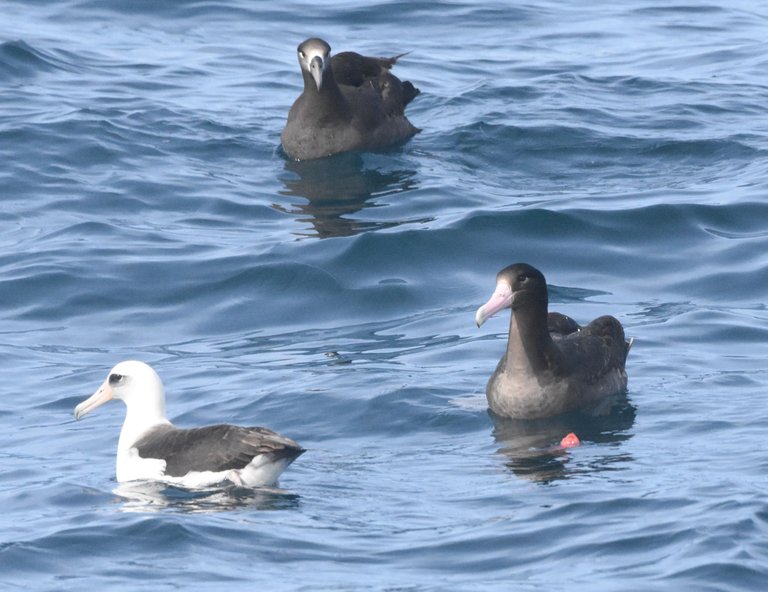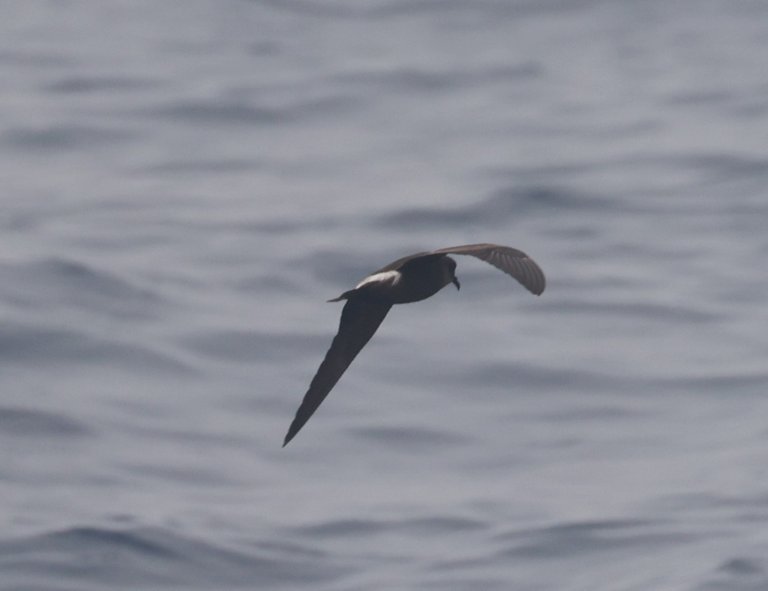
This is a photo of the three species of albatross that are seen off the coast of Washington, the Laysan Albatross Phoebastria immutabilis (black and white) in the lower foreground, the Short-tailed Albatross Phoebastria albatrus with the big pink bill, and the much more commonly seen Black-footed Albatross Phoebastria nigripes at the top.
These are among a group of seabirds commonly referred to as "tubenoses" because of the tube-like structure on top of the bill that serves as a way for these birds to excrete excess salt. They live for months and sometimes years at sea, with no source of fresh water, and so need to rid their system of excess salt in the food and water that they ingest.
In some species this "tube is really visible. Check out this Northern Fulmar Fulmarus glacialis.

These birds can range from the extremely large albatrosses, to much smaller storm-petrels. This Townsend's Storm-petrel Hydrobates socorroensis is quite small with a wingspan of 41-44 cm, vs the Black-footed Albatross above which is among the largest birds on earth with a wingspan of 193-216 cm.
Overall these birds have incredible lifestyles, living at sea except to breed, and some travelling immense distances following food sources in the oceans of the world.
Nature is remarkable and wonderful.
Good birding!
